How To Repair A Chip In Old Pottery
Footstep-by-stride procedure of performing a seamless repair on a chipped large Italian platter using the all-time commercially bachelor materials including cementing, filling, painting, and glazing. This process can use to chipped plate, chipped vase, bowl, pitcher, figurine or whatever pottery, cathay or ceramic vessel.
What Will You Demand | C ementing
1. Two-office articulate 5 min Clear epoxy
2. Wooden stick, or a pin-tool
3. A container with pvc pebbles or rice
iv . Razor bract
v. Denatured or 91% Alcohol
6. Newspaper pad to mix Epoxy on
7. Skillful light
8. Protective eyewear
Where to become supplies
IMPORTANT: Ceramic restoration materials are not nutrient-rubber, liquid or heat-proof (over 190 degrees F) and repaired items should not be used on cooking or food serving ware more...
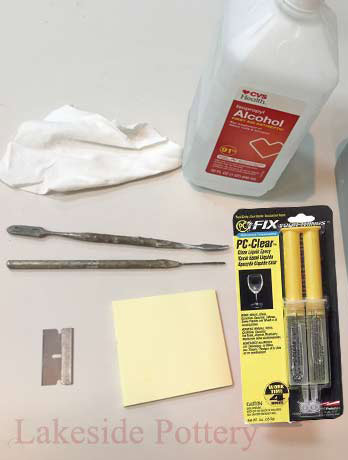
Cementing Ceramic Broken Pieces
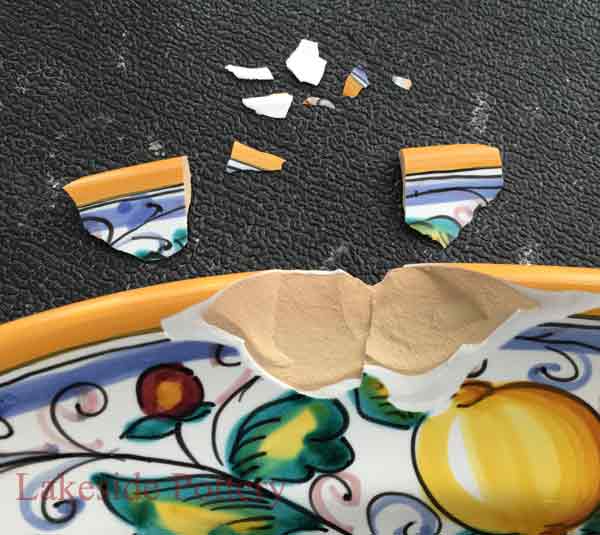
Brand certain the pieces are clean using alcohol. If the item has been fixed earlier clean off any old adhesive, or the new adhesive may not bond properly. Instruction to remove old adhesives.
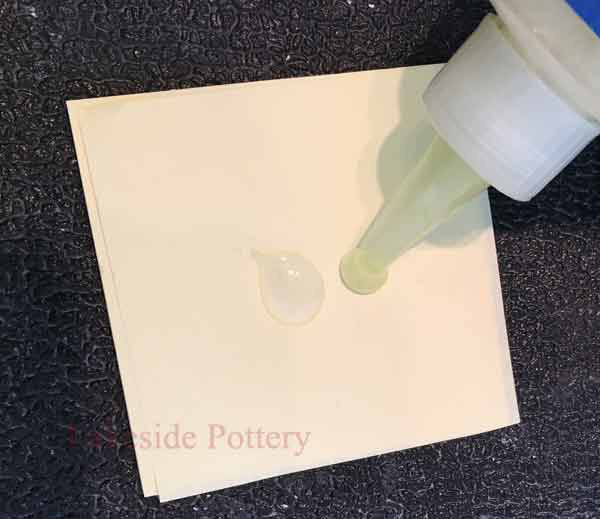
Place even amounts of 5-minutes articulate epoxy on a paper or cardboard pad
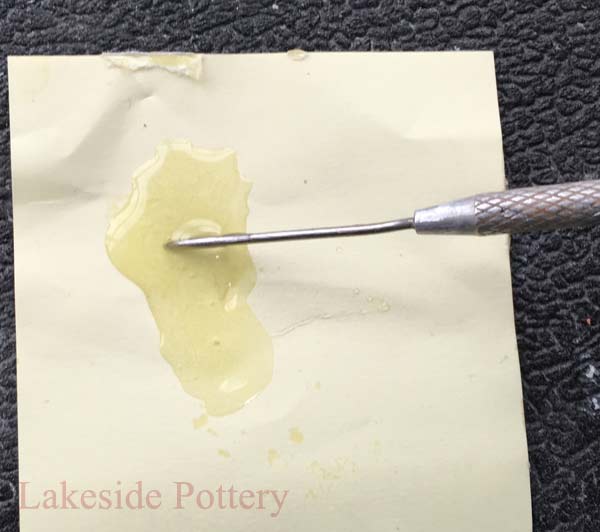
Mix epoxy well with a pin tool, paper prune or a wooden stick.
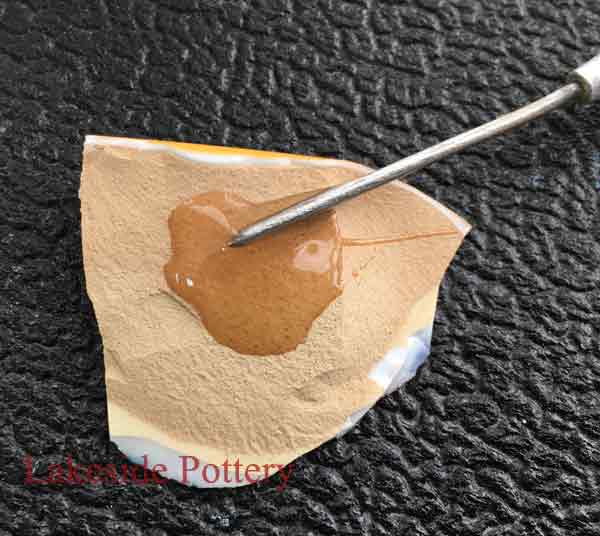
Employ epoxy mix to one side using a pintool or a wooden stick
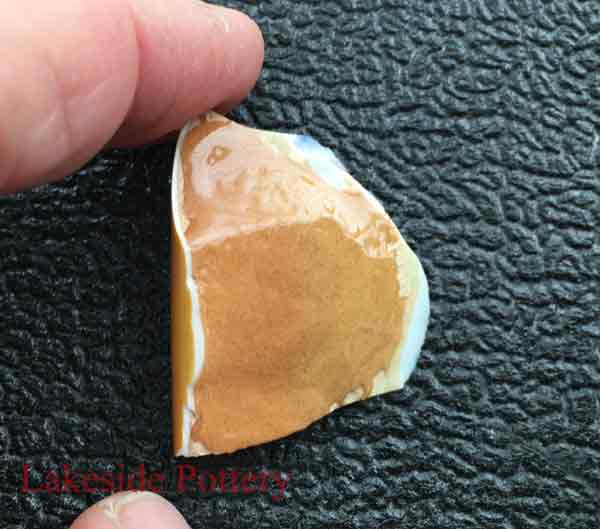
Use only plenty adhesive to cover the edge. Too fiddling will exit gaps, resulting in a weak repair
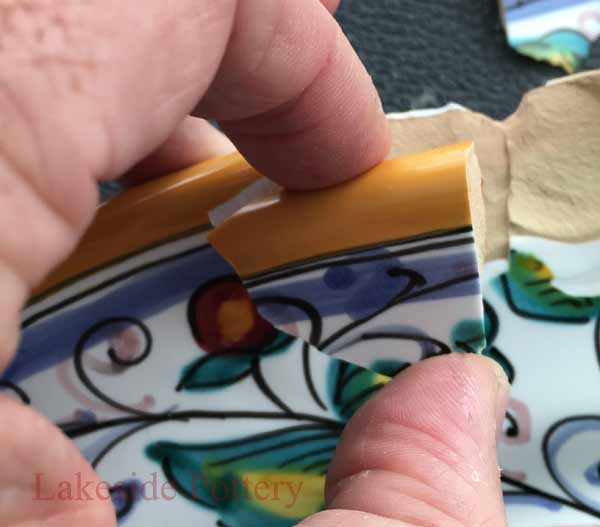
Identify broken slice over the epoxy. Of import: You have simply about threescore-90 seconds from start of epoxy mixing to complete the broken slice'due south permanent placement earlier the epoxy becomes gummy and not workable
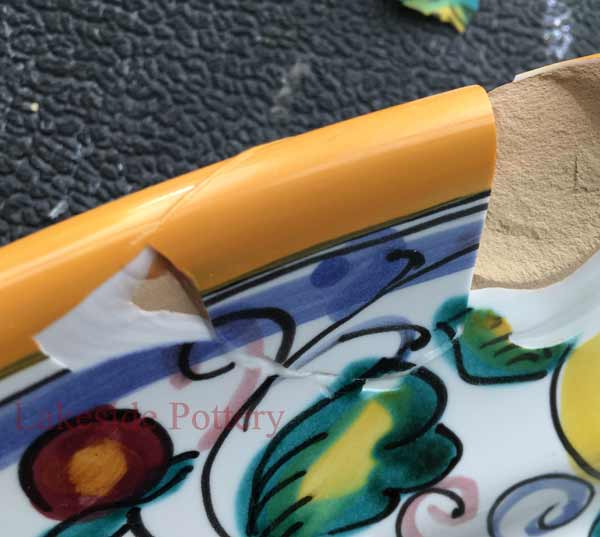
Quickly join the pieces together while applying light force per unit area to squeeze extra epoxy out. You lot only have nigh 60–90 seconds from start of epoxy mixing to placement before the epoxy becomes gummy and unworkable. Do non wipe off the squeezed-off epoxy to avert smearing.
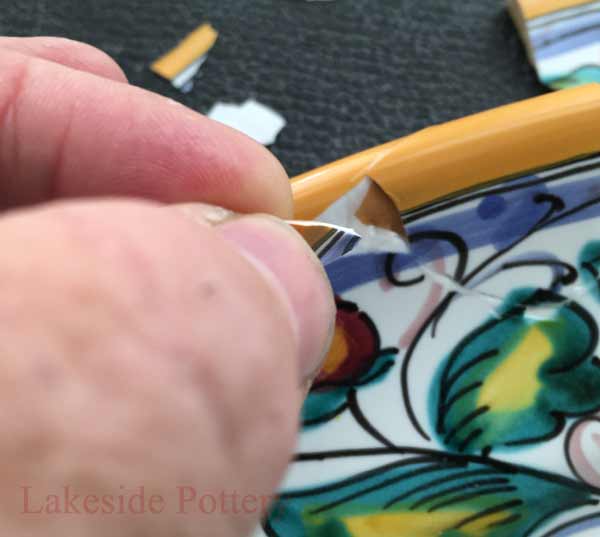
If your item is cleaved to more than than a couple of pieces, plan the attachment sequence to avoid being left with a final slice that cannot be easily attached or fit in. Numbering the pieces after a dry run is a skillful idea and volition assistance in the actual implementation.
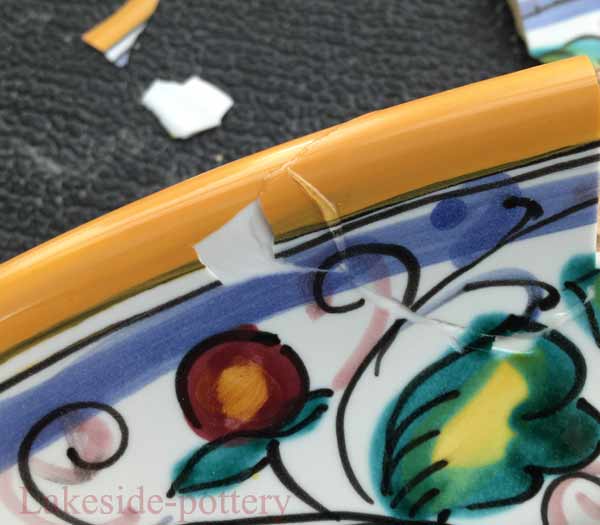
Verify that pieces can stay steady during the cure period (let it cure at 75 degrees F or warmer)
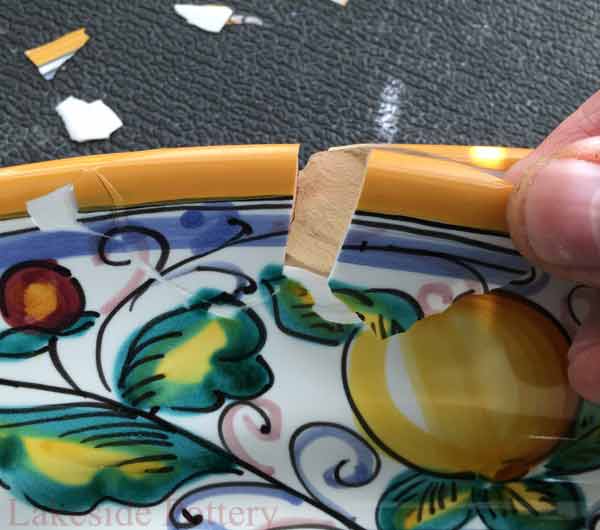
Verify fit with side by side piece. Immediately after applying the previous piece, if epoxy squeezes out into the side by side piece space, clean information technology with the pivot tool and alcohol to insure it will not interfere with subsequent pieces proper fit
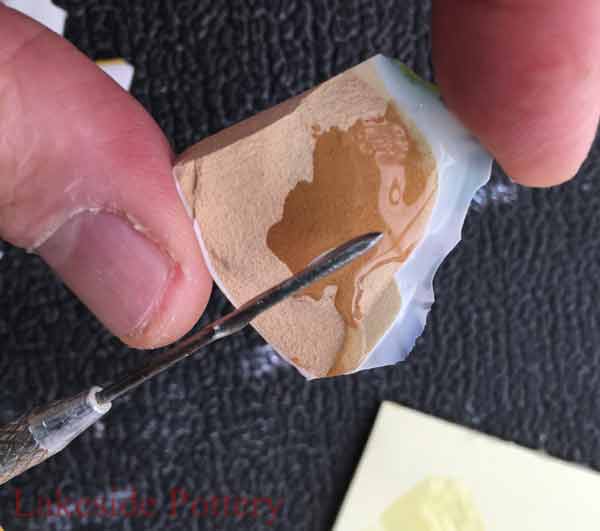
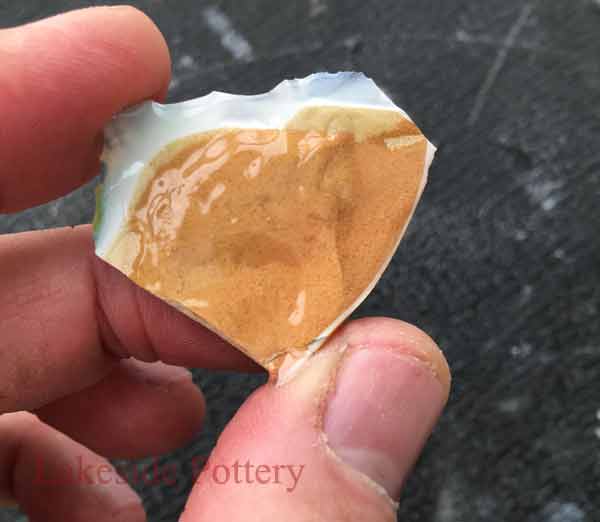
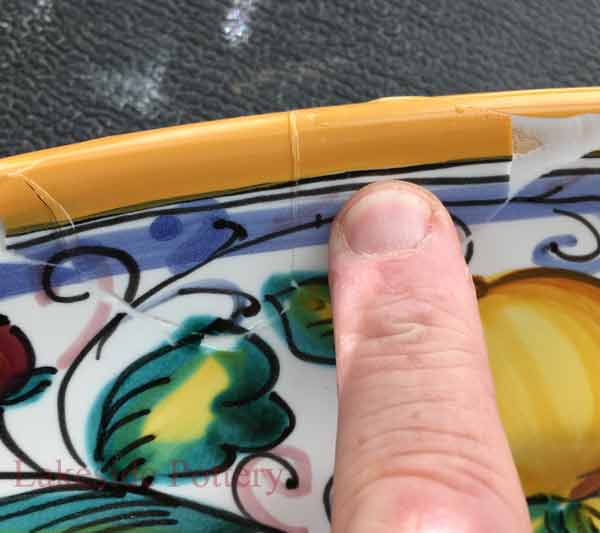
Button difficult to squeeze out epoxy
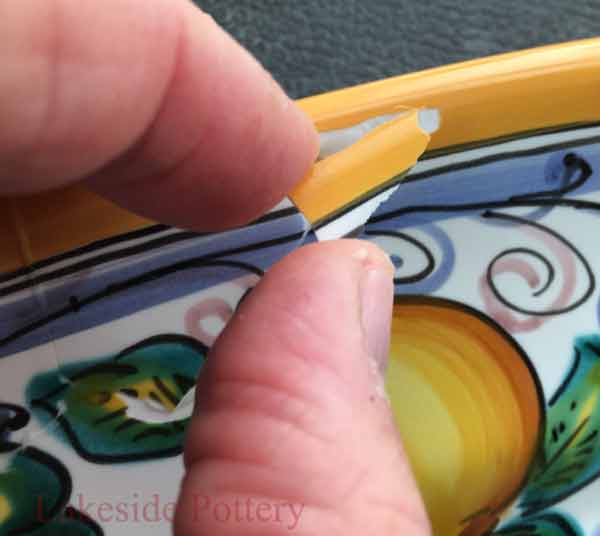
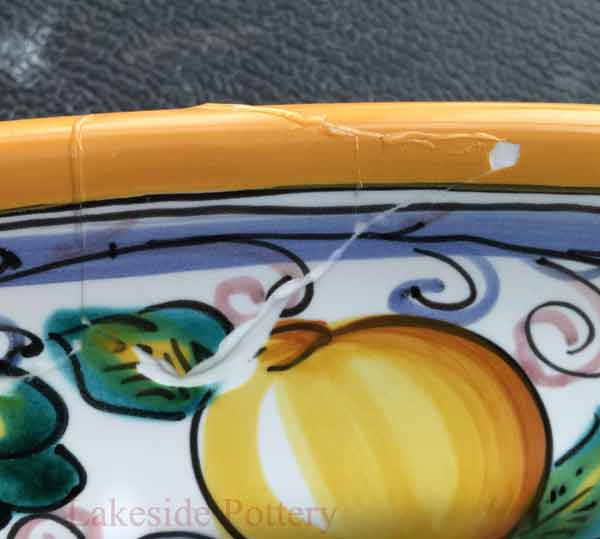
Expect fifteen-20 minutes before addressing the other side
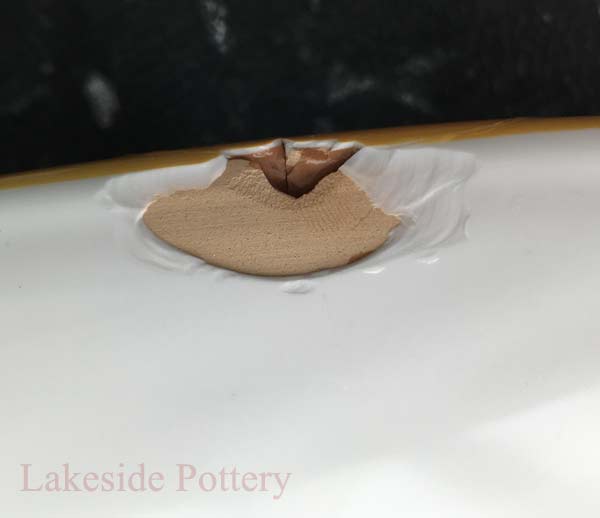
Other side remaining impairment
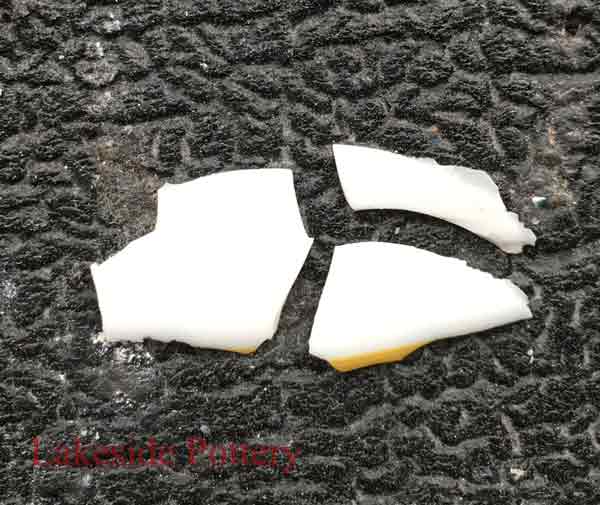
Rear side pieces
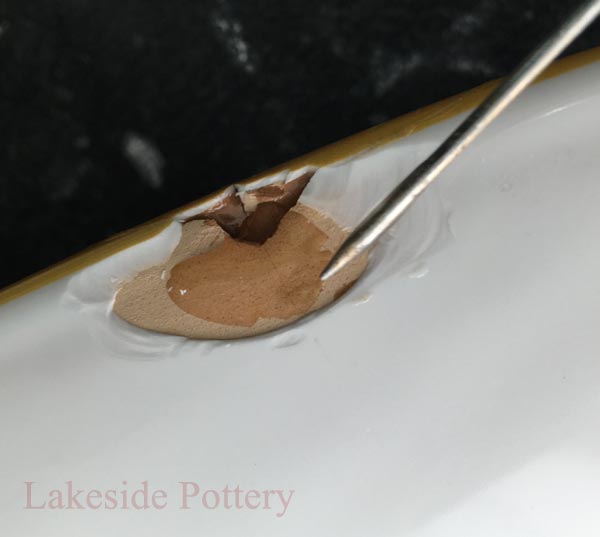
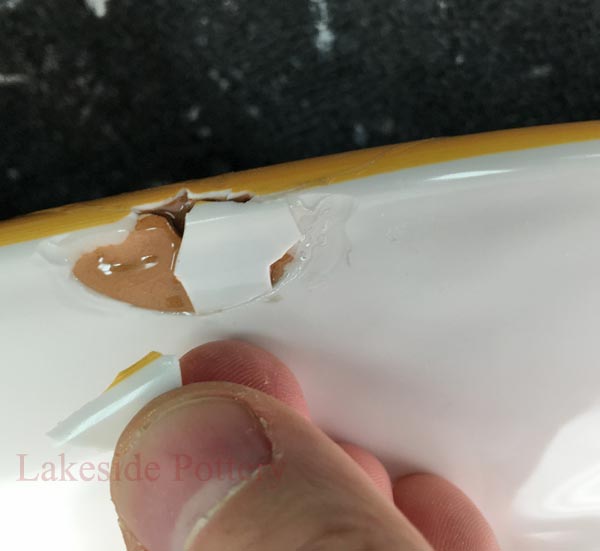
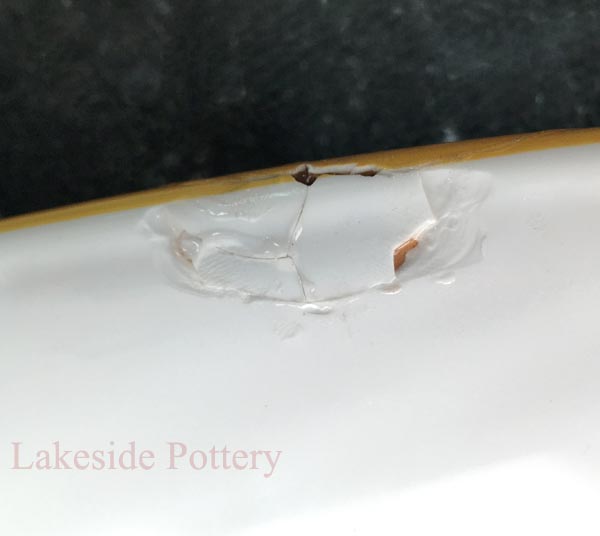
Look ane-two hours before clearing squeezed epoxy
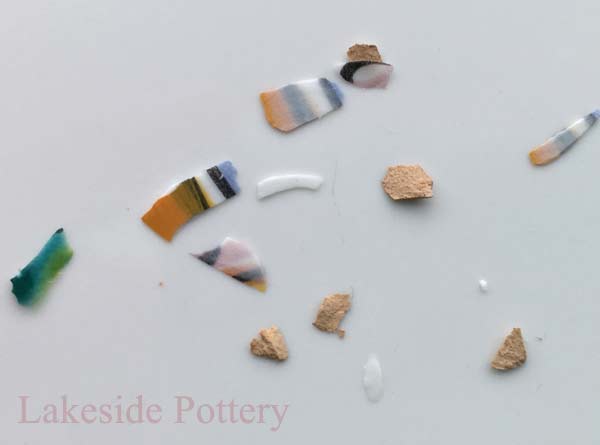
Small pieces are non used and tin be thrown away
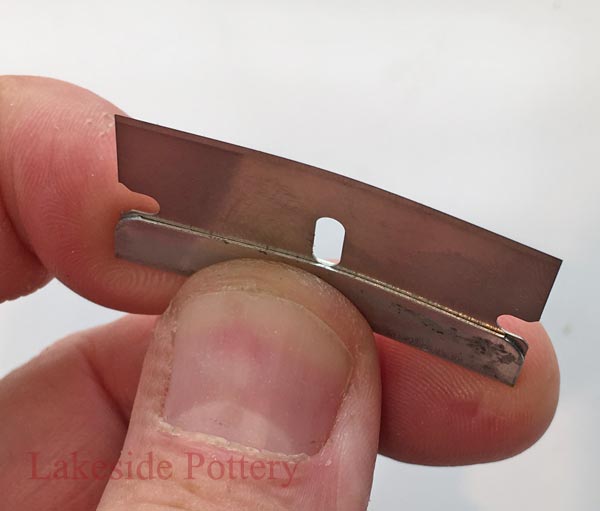
Bend blade for better access immigration unwanted cured epoxy. Warning - clothing protective eyewear
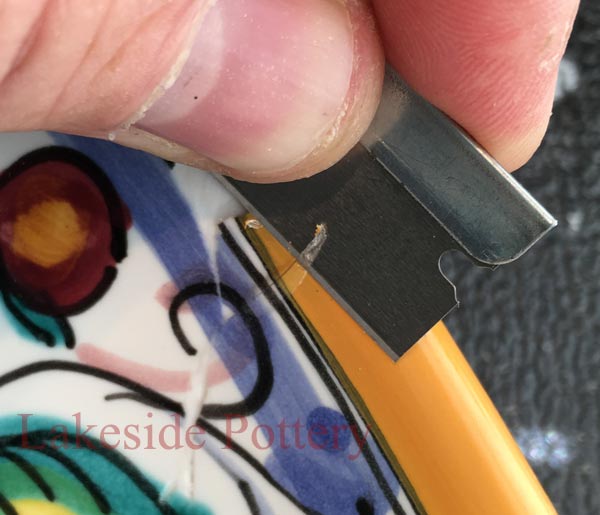
Permit the epoxy cure for 60 or more minutes before removing excess cured epoxy with a blade
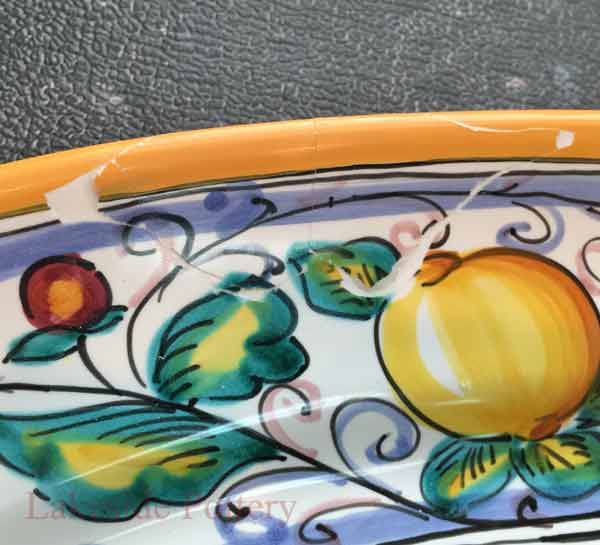
What You Will Demand | Filling and sanding
one. Two parts Epoxy filler PC-eleven
2. Dremel with EZ lock 120 dust disc
3. 220 grit sand paper
iii. 400 grit sand paper
4. Rag
five. Mini Spatula
6. Paper pad to mix Epoxy on
vii. Denatured or 91% Alcohol
Where to get supplies
IMPORTANT: Ceramic restoration materials are not nutrient-safe, liquid or estrus-proof (over 190 degrees F) and repaired items should not be used on cooking or food serving ware more...
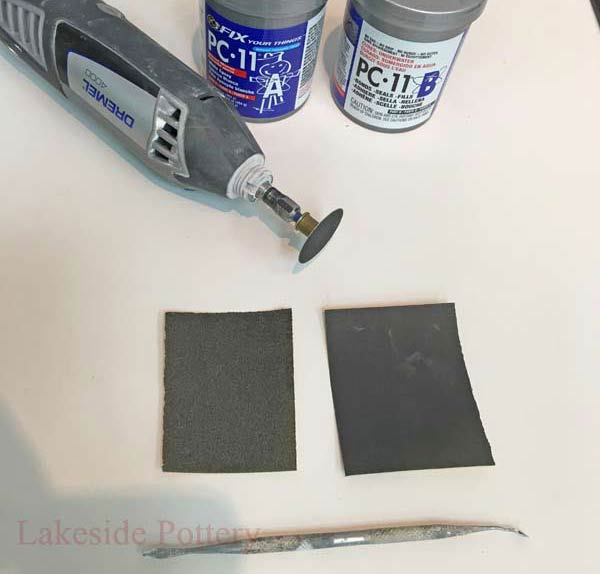
Filling, Sanding and Surface Preparation
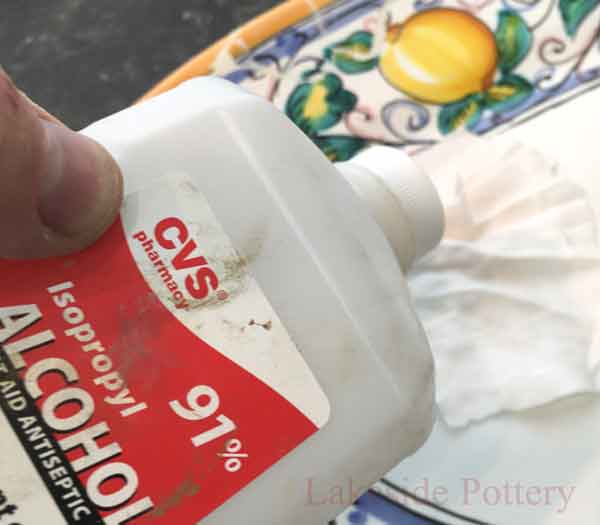
Wipe all surfaces with a 91% alcohol to remove dust and paw oils prior to applying filler epoxy
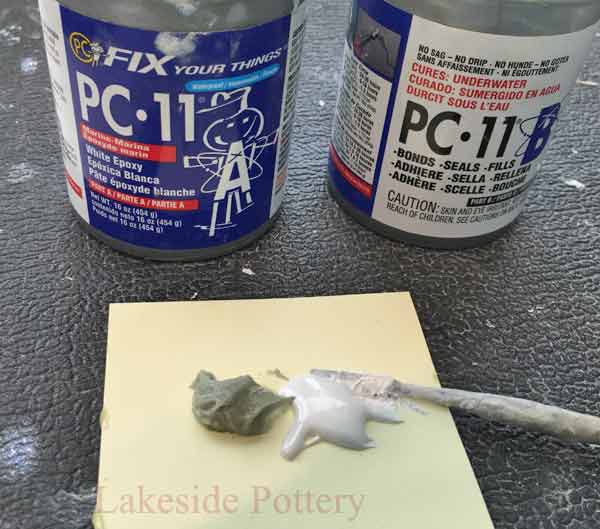
Mix even parts of PC-11 epoxy filler. For ease of application, work in room temperature of 75 degrees F or warmer. We place the PC-xi in a small heater and keep it at 100 degrees F.
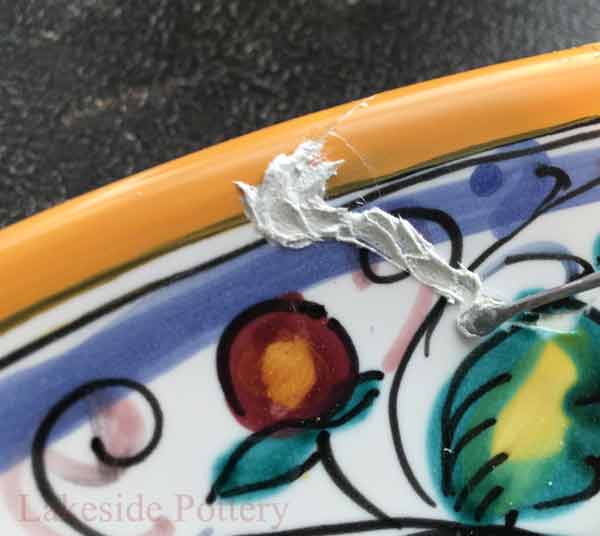
Employ sparse layer of filler while pushing in to fill up cracks and missing fragments
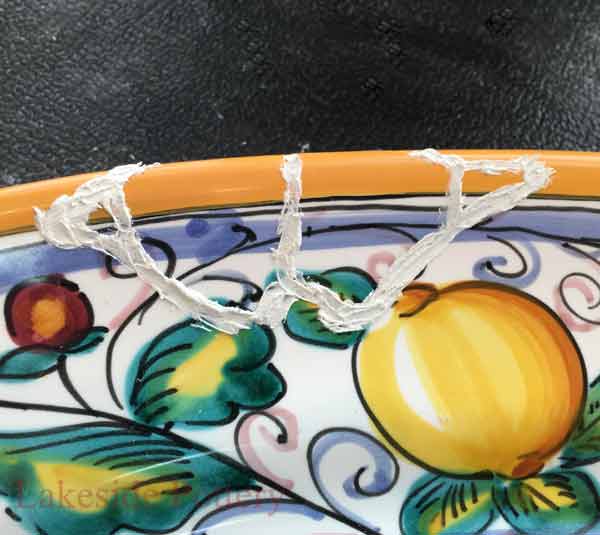
Allow filler epoxy to cure for 12-24 hours (or longer) at a temperature of 75 degrees F or warmer. We identify our filled projects in a 140 degrees F oven over dark.
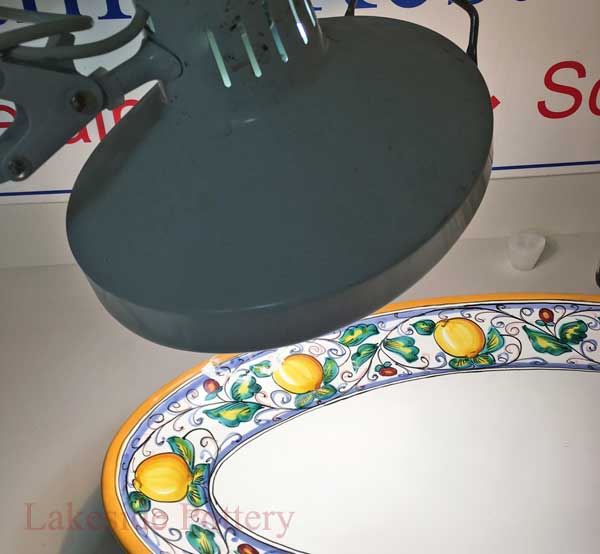
Placing under a lamp is some other good selection to optimize hardness for meliorate sanding performance. Identify at to the lowest degree 12" away from repair detail to avoid overheating.
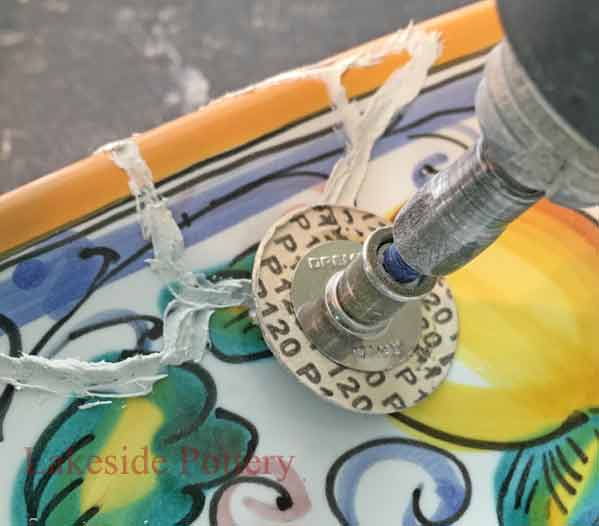
Use Dremel EZ lock sanding disc 120 grit for sanding.
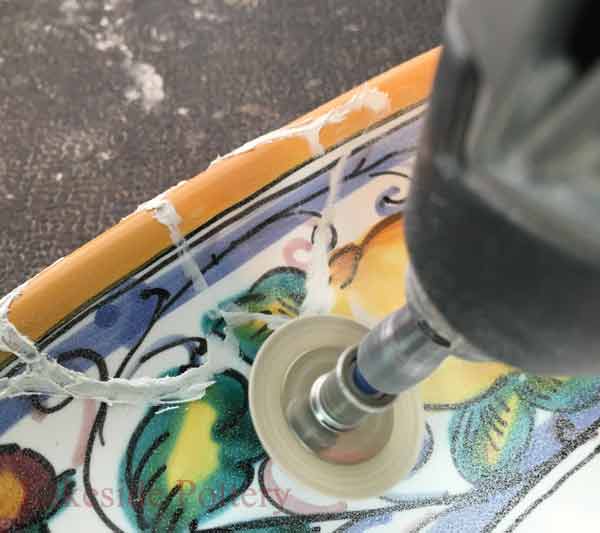
Apply depression speed to avoid burn marks and apply light pressure. Go out the final 10% or so for sanding past hand.
Warning - wear protective eyewear
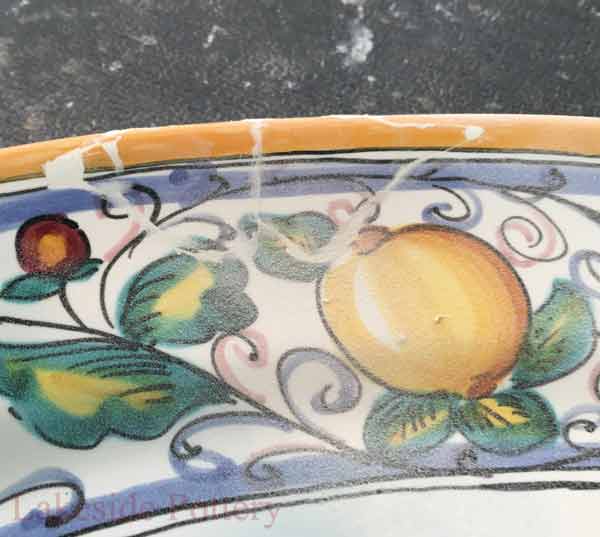
If Dremel is not available, sanding the whole job by paw (using dust 220 sandpaper) will take longer but will yield the same results
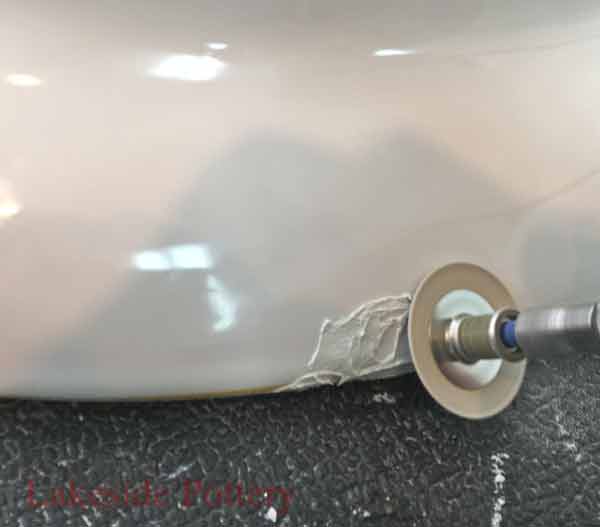
Repeat process on platter'south other side
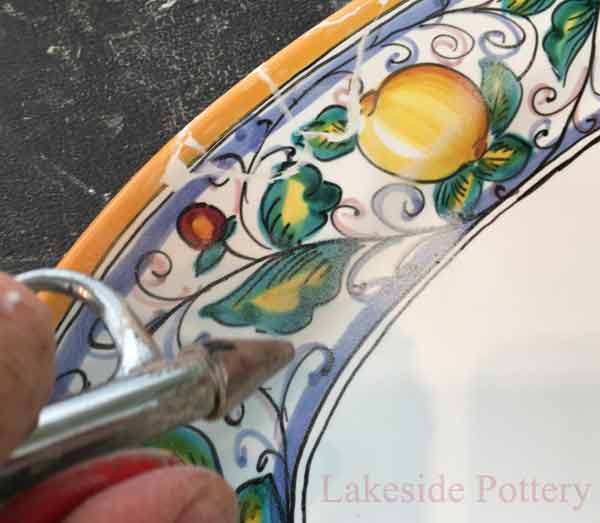
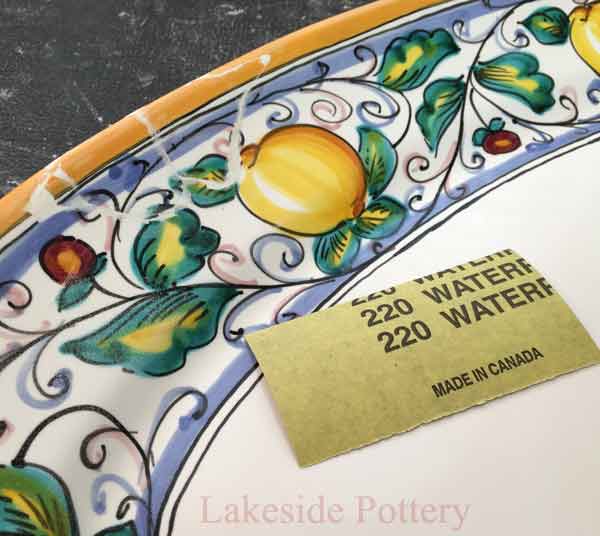
Continue sanding by mitt using grit 220
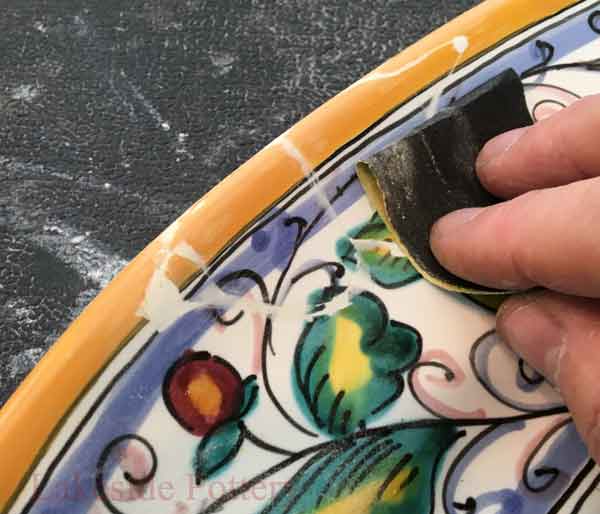
Apply long strokes for authentic surface continuity
If upon inspection, missed cracks are found, echo the steps in a higher place for the selected areas

Use 91% alcohol for clean upwards
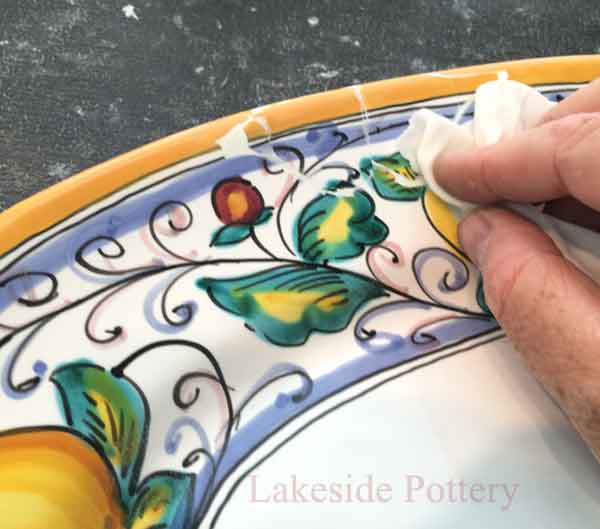
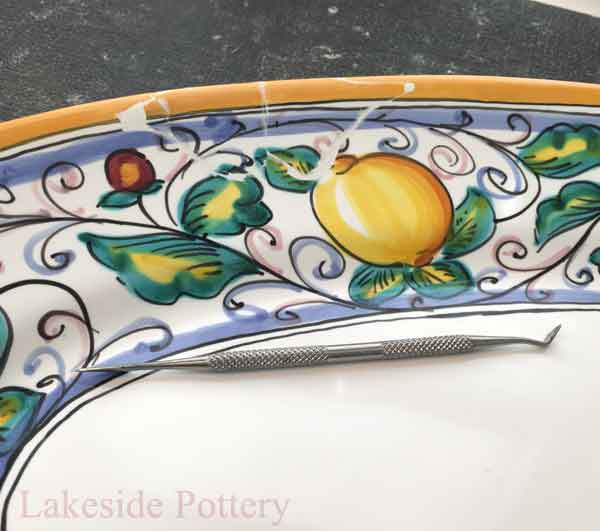
After the beginning round of sanding, a 2d finer filling is required using a pocket-size sepulcher tool
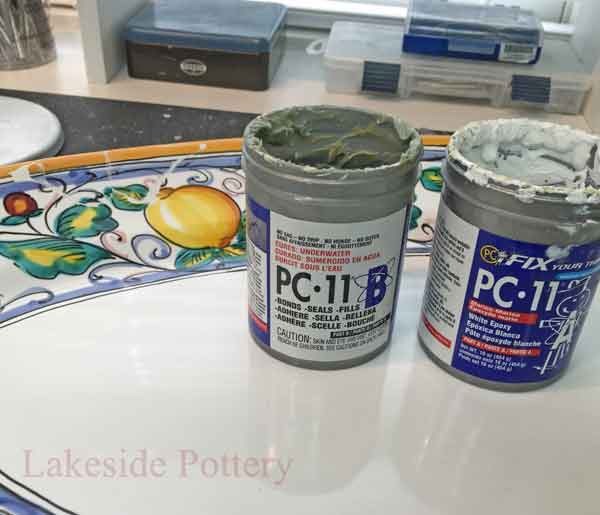
Same filler (PC-eleven) is used for second application
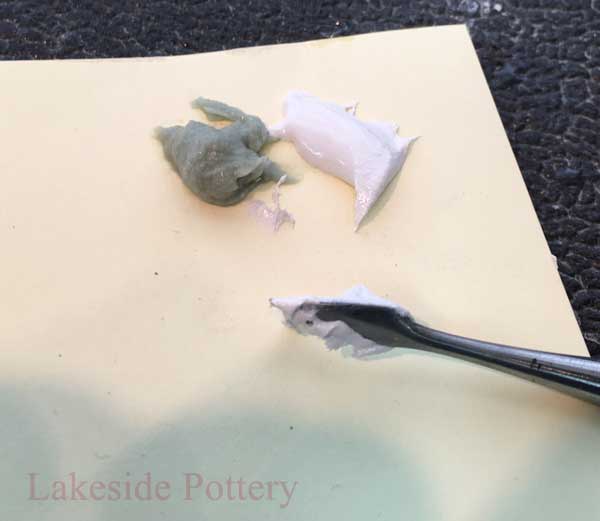
Mix well the epoxy filler two even parts
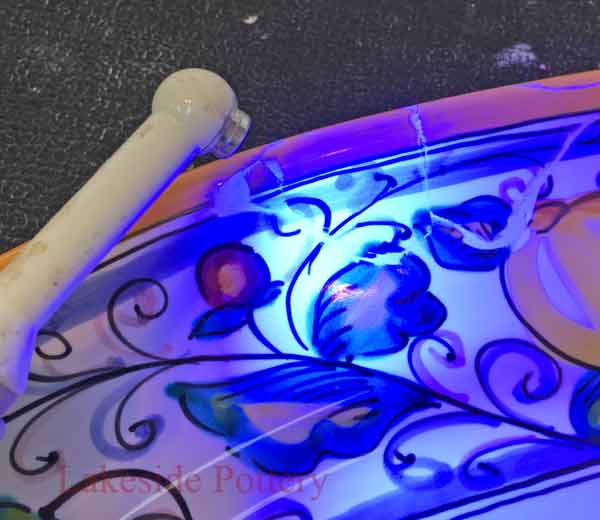
Inspect surface with UV calorie-free or a spotlight for whatsoever surface defects (cracks, pits, pumps, etc.)
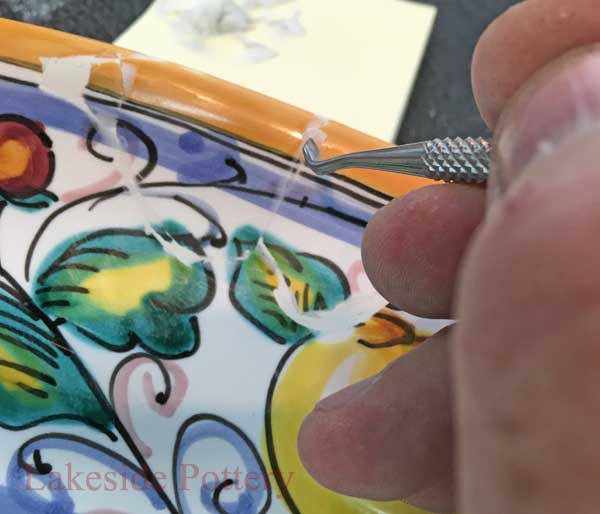
For seamless surface fill the defects with PC-11 lightly
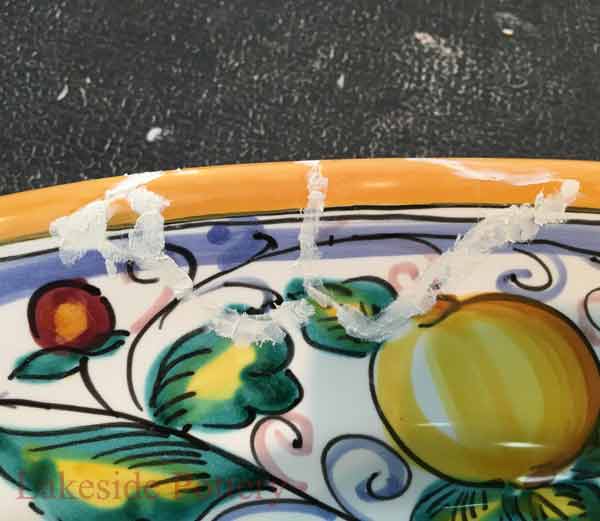
Wait for filler second layer to cure in a warm room (see more above) before sanding
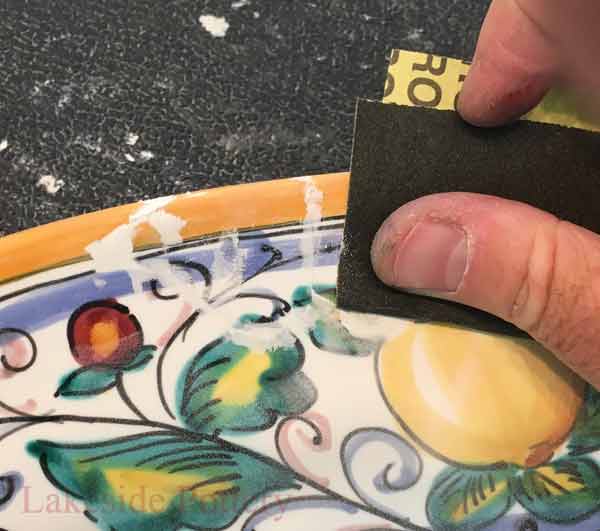
Sand second layer by hand with long strokes using grit 220, and so grit 400 and finish with dust 3600. It may be necessary to apply a third or fourth layer if UV / light close inspection reveals more than surface defects

Wipe with alcohol for better paint bond
Painting and Glazing
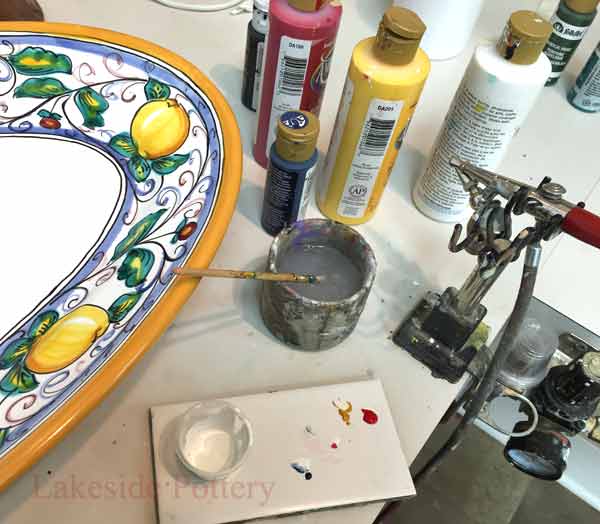
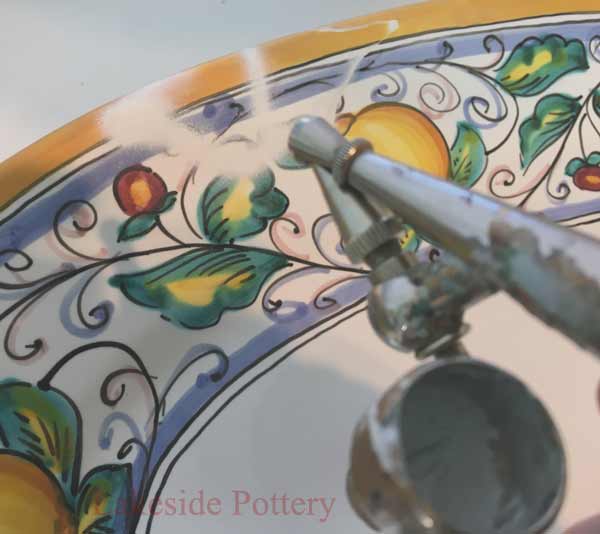
Airbrush over the repair line and taper off for shine color integration to original background coat.

Painting over the repair line will erase painting details which will be replenished after
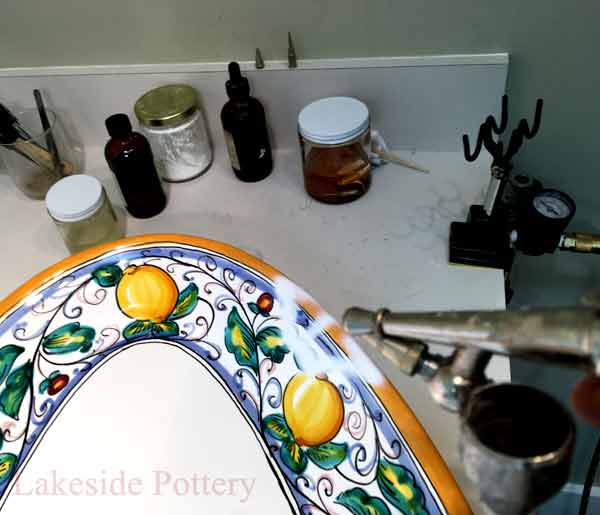
Wait a solar day or two for the acrylic paint to dry out well and apply thin layer of cold glaze to protect the applied the painted areas.
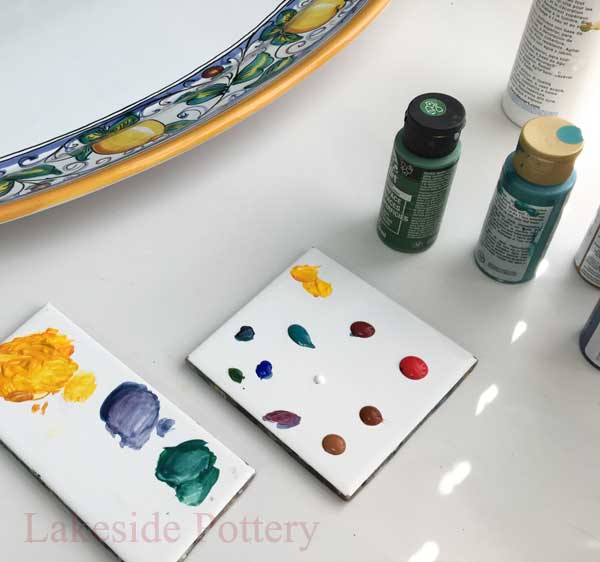
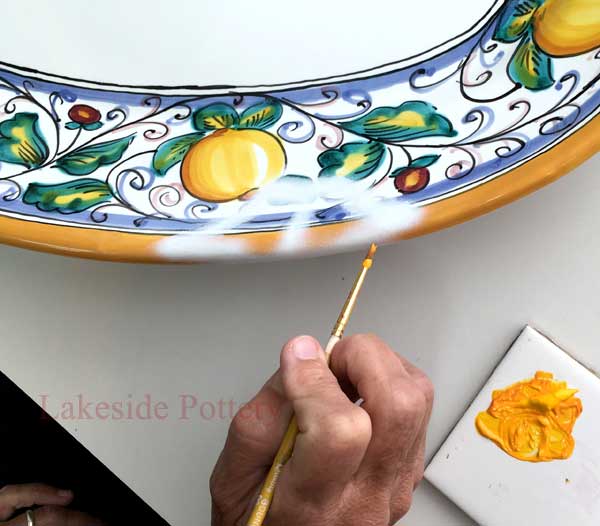
Use fine brushes to apply colors
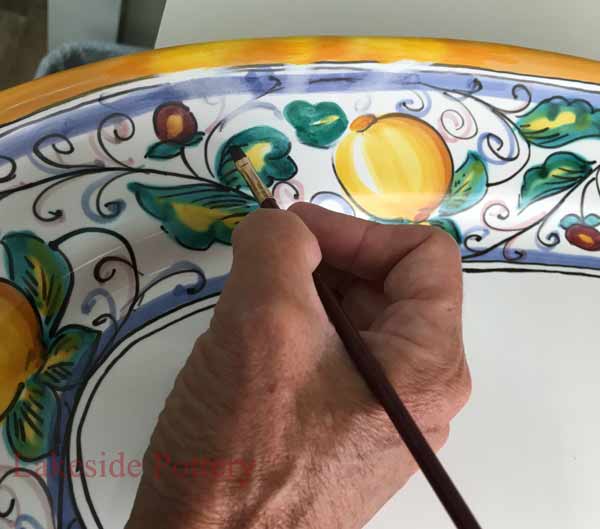
For translucent effect, paint several coats of thinned paints
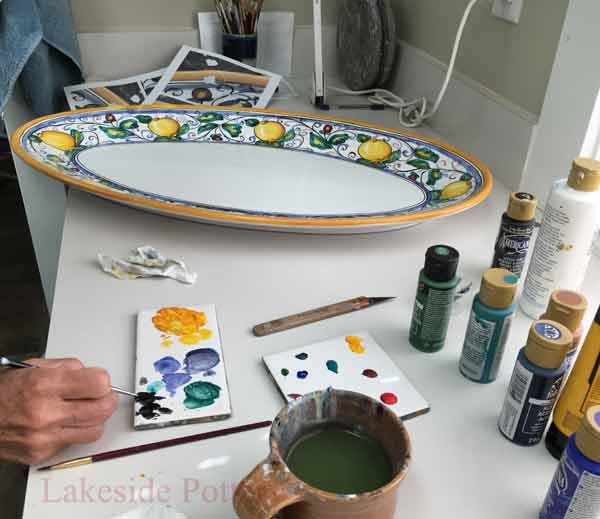
In this instance, apply black color last
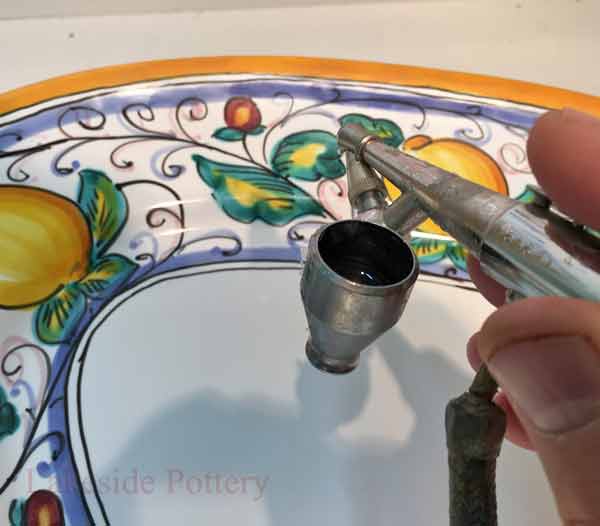
Wait for painting to properly dry (a couple of days) and airbrush articulate glaze
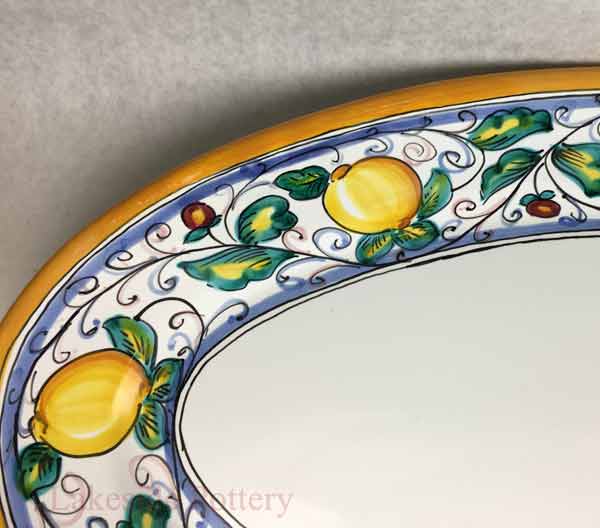
A second layer of clear glaze may be required. Sand surface with a 3200 grit micro-mesh (later waiting a day or ii for 1st layer curing), wipe grit off and reapply cold glaze
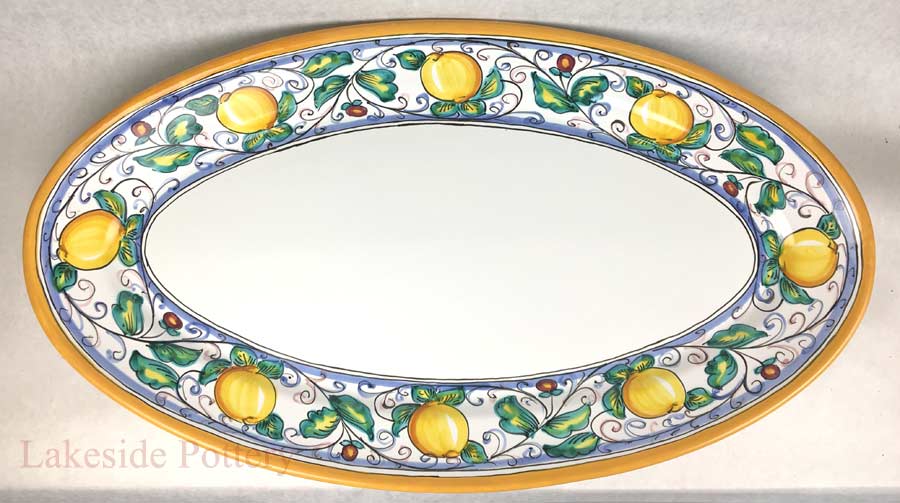
Platter set for shipment
Remove old repair, Mend the broken segments, fill gaps, sand filler, paint and glaze the repaired areas.
Source: https://www.lakesidepottery.com/Pages/Pottery-tips/How-to-repair-chipped-pottery-china-ceramic-step-by-step.htm
Posted by: johnsonhouncest.blogspot.com


0 Response to "How To Repair A Chip In Old Pottery"
Post a Comment